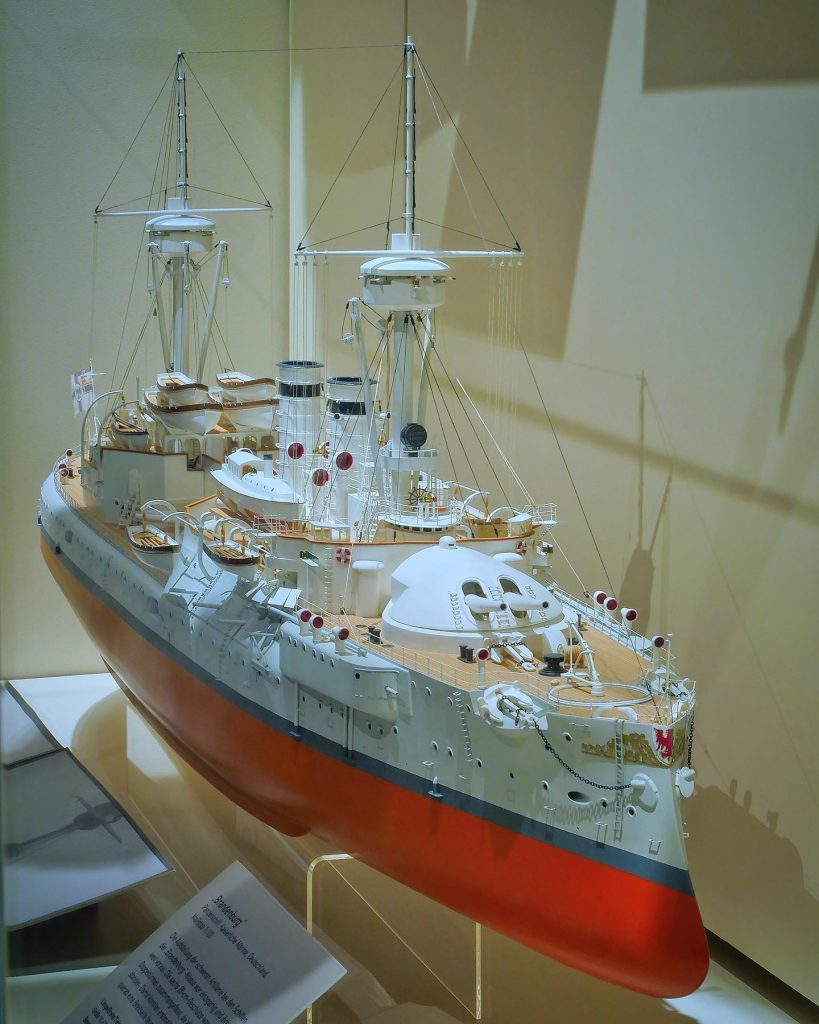
The battleship SMS Brandenburg (1891-1920). This amazing model was built by G. Seherr on a scale of 1:100 and is on display in our section dedicated to the history of modern navies on deck 5 of the museum.
The historical significance of the battleship SMS „Brandenburg“ of the Imperial German Navy is not related to her deeds. The ship possessed a design feature that influenced shipbuilding in the years following its construction in 1891. It was also a symbol of a change in the German Empire’s military strategy that had a major impact on the global geopolitical situation in the first half of the 20th century.
The design aspect is quite easily explained: while most heavier battleships before the SMS „Brandenburg“ had a main battery of four heavy guns on two twin turrets, the Brandenburg carried six 28 cm caliber guns. This concentration on heavy artillery can be seen as the first step towards the development of the dreadnought ships of the First World War.
The SMS „Brandenburg“ represents the changes in German politics that came with the accession of Emperor Wilhelm II to the throne in 1888. Under Wilhelm I, the German Empire had concentrated its military efforts on developing its power on land. The imperial navy had merely taken on the task of coastal protection. Under Wilhelm II, this changed radically. The Reich developed colonial aspirations and saw the need to create a powerful navy to compete with France and Britain. The construction of the „Brandenburg“ and her three sister ships in the first half of the 1890s was the first step in this direction.
The „Brandenburg“ had a rather quiet career. She served mainly as a training ship and for representational purposes. In 1900, she was sent to China to help put down the so-called Boxer Rebellion. The ship arrived in China when the main conflict had already ended and only took part in secondary actions. Although she was heavily modernised in the early 1900s, she was already obsolete by the outbreak of the First World War. For this reason, she was only used for coastal defence for a short time. From 1915 she was used as a floating barracks and in 1920 she was finally scrapped.
This amazing model was built by G. Seherr on a scale of 1:100 and is on display in our section dedicated to the history of modern navies on deck 5 of the museum.
